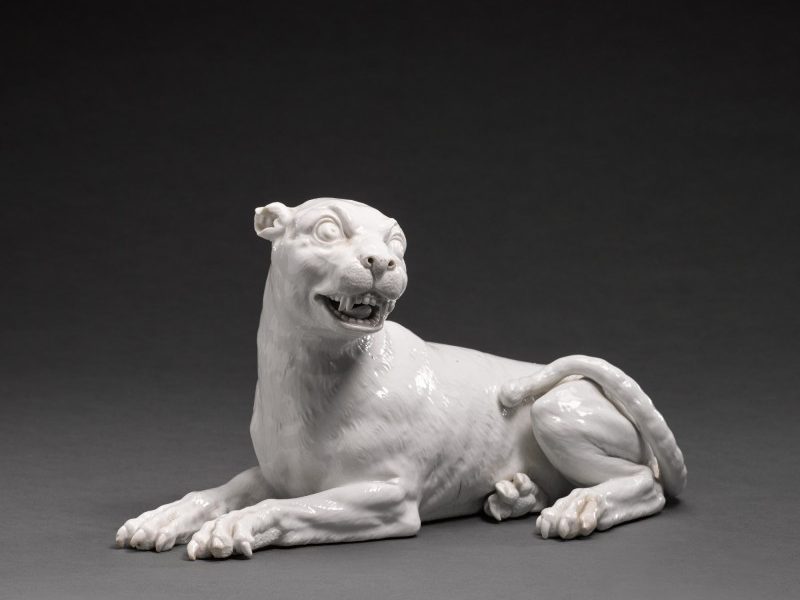
It is always useful to know where any one piece originated from. Provenance helps collectors identify with the history of a piece.
A simple example of this is this very rare white figure of a lioness. The crossed swords mark painted in blue is hardly discernible. It will take someone with keen eyesight to discover where the mark has been painted. Almost certainly on the base and too much moving the Lioness around the mark painted on a unglazed base will have in time been rubbed away.
Most probably it was a serious collector fighting off strong underbidder; who bought the lioness for £88,200. He may have been influenced by the provenance and this helped him secure the Lioness. The high cost may have been not just because there were other bidders but also these other bidders also influenced their bidding based on the Provence that the Lioness was originally sold at Sotheby in 1985.
This doesn’t mean to say if a similar group of a Lioness would come up for sale would sell for a similar amount. It could make more of less depending on the importance of the collection it was originally sold in. In the case of this Lioness it came out of the collection of Elizabeth A Keck. The following link illustrates Elizabeth’s appreciation for the finest of culture as well as an eye of the most opulent of object to go into her Bel Air Home.

